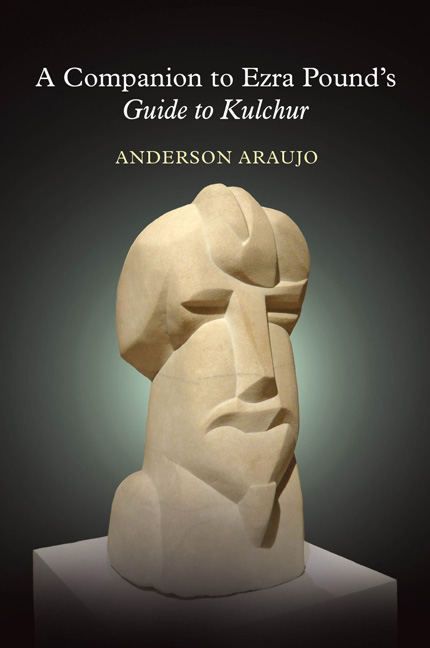Book contents
- Frontmatter
- Contents
- Acknowledgments
- Abbreviations
- Introduction
- Guide to Kulchur
- Part I
- Section I
- Section II
- Part II
- Section III
- Section IV
- Part III
- Section V
- Section VI
- Part IV
- Section VII
- Section VIII
- Section IV
- Part V
- Section X
- Section XI
- Part VI
- Section XII
- Section XIII
- 57 Epilogue
- 58 To Recapitulate
- Addenda: 1952
- Notes
- Index
57 - Epilogue
from Section XIII
- Frontmatter
- Contents
- Acknowledgments
- Abbreviations
- Introduction
- Guide to Kulchur
- Part I
- Section I
- Section II
- Part II
- Section III
- Section IV
- Part III
- Section V
- Section VI
- Part IV
- Section VII
- Section VIII
- Section IV
- Part V
- Section X
- Section XI
- Part VI
- Section XII
- Section XIII
- 57 Epilogue
- 58 To Recapitulate
- Addenda: 1952
- Notes
- Index
Summary
Ricards … Gaudier: Edwin Alfred Rickards (1872–1920), British architect who, in partnership with Henry Vaughan Lanchester (1863–1953), played a key role in popularizing Edwardian Baroque public architecture. In his tribute to Rickards's “true sense of form,” allied with the notion that the unemployed Gaudier-Brzeska could have lent a hand at the architect's firm, Pound seems to imply that their aesthetics intersected at critical points. Rickards's architectural style typifies, as John Warren sums it up, “simplicity and severity of the basic masses when stripped of their ornament.” This coincides to a remarkable degree with Pound's assessment of Imagism in Gaudier-Brzeska, “it does not use images as ornaments. The image is itself the speech. The image is the word beyond formulated language.”
- Type
- Chapter
- Information
- A Companion to Ezra Pound's Guide to KulcherGuide to Kulcher, pp. 358Publisher: Liverpool University PressPrint publication year: 2018

